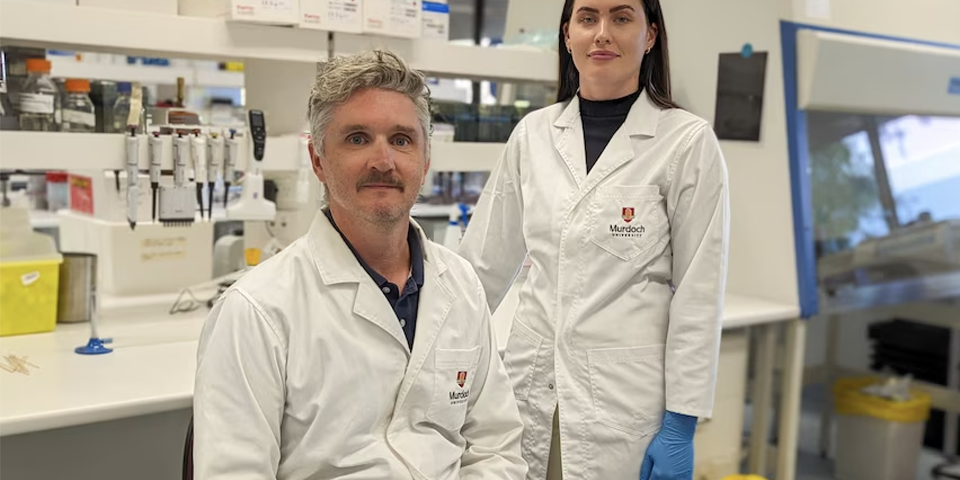News
Global Media for Forensics "Sexome" Study

Hot off the press! MMFS forensics research team is getting a lot of media attention this week, for their work on the “Sexome” and how it could play a vital role in helping to catch perpetrators of sexual violence.
MMFS forensics research team Ruby Dixon, Dr Brendan Chapman, Siobhan Egan, A/Prof Matthew Payne and Dr Christopher Mullally is getting a lot of media attention this week, on their work on the “Sexome” and how it could play a vital role in helping to catch perpetrators of sexual violence. This groundbreaking research, just out this week in the journal iScience suggests that sexual partners transfer their distinctive genital microbiome to each other during intercourse. The findings have significant implications for forensic investigations, potentially aiding in the identification of sexual assault perpetrators.
What is a "Sexome"?
The central theme of the research is the unique bacterial composition of the genital microbiome, referred to as the "Sexome." The study highlights how these microbial traces are transferred between partners during sex, leaving a unique microbial "fingerprint" that can be detected even when a condom is used. This discovery could revolutionise forensic science by providing an additional method to link suspects to victims in sexual assault cases.
Global science medial have picked up this research
- New Scientist: 'Sexome' microbes swapped during sex could aid forensic investigations - Sexual partners transfer their distinctive genital microbiome to each other during intercourse, a finding that could have implications for forensic investigations.
- New Atlas: The ‘sexome’: A new forensic tool to identify perpetrators - The bacterial composition of our genital microbiome is as unique as we are, and it's transferred during sex, according to new research.
- Phys.org: The sexome's forensic potential: After intercourse, both partners leave traces of their own unique genital microbiome - Criminal investigations of heterosexual sexual assault often include a DNA analysis of the woman's genitals with the aim of identifying the assailant.
- Gizmodo: Meet the Sexome: The Bacteria in Our Junk That We Swap During Sex - New research shows that we regularly transfer traces of our genital microbiomes to sexual partners—a discovery that could someday be used as forensic evidence.
- Live Science: Sex leaves 'microbial traces' on genitalia, even when a condom is used — scientists call it the 'sexome' - A new study has revealed that, during sex, male and female partners leave unique microbial "imprints" on each other, even when they use a condom.
- IFLScience: Even Condoms Don’t Stop The Transfer Of “Sexome” Bacteria - The discovery increases the chances that condoms won't save rapists from being convicted through forensic evidence.
- Scimex: After sex, we leave a unique genital microbial 'fingerprint' on our partners - Peer-reviewed: This work was reviewed and scrutinised by relevant independent experts. Experimental study: At least one thing in the study was an experiment.
The attention that MMFS forensics research is receiving underscores the profound impact that understanding the "Sexome" could have on solving sexual violence cases, offering new hope for justice for victims.
You can read the full article here:
Bacterial transfer during sexual intercourse as a tool for forensic detection
Dixon, Ruby et al.
iScience, Volume 0, Issue 0, 111861
For more information contact Brendan.Chapman@murdoch.edu.au